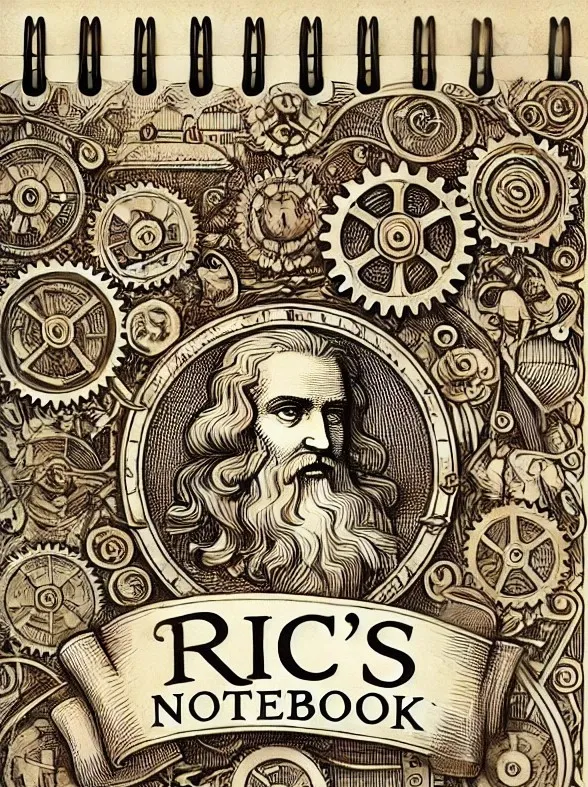
- Published on
- Authors

- Name
- ric de yuga 😄
The Alternating Current Rocket Booster: A Lesson in Pressure, Flames, and Physics
Inspired by a Gravity Bong and the Rhythm of Nature
What do a gravity bong, a bird flapping its wings, and a rocket booster have in common? At first glance, not much. But sometimes, the wildest ideas come from the simplest observations. Today, we’re diving into a science lesson about an imaginative rocket booster design—one where the flames cycle on and off like a bird’s wings or a bobber floating on water. This isn’t just a flight of fancy; it’s a thought experiment rooted in physics, pressure dynamics, and a little DIY ingenuity. Buckle up—let’s blast off!
The Spark of Inspiration: A Gravity Bong Epiphany
Picture this: I’m tinkering with a gravity bong—you know, the kind where you submerge a bottle in water, pull it up to create a vacuum(pull of negative pressure does indeed = momentary vaccume), and draw smoke from a bowl into the chamber. Standard stuff, right? But here’s where it got interesting. With the downstem (the tube that carries smoke into the bottle) only a quarter of the way down, the smoke wouldn’t fill the space below it properly. The vacuum wasn’t cutting it. Direct pulls? Meh. Alternating pulls?
Then I had an idea. I added a straw that poked up past the downstem and out through a hole I’d made at the bottom of the bottle. Instead of a steady pull, I bobbed the bottle up and down in the water. The air pressure inside fluctuated—rising and falling like a heartbeat—and suddenly, whoosh! The entire bowl’s worth of smoke rushed into the bottle, filling it completely. It was mesmerizing, like watching a tiny engine pulse to life.
That’s when it hit me: what if we could apply this rhythmic pressure trick to something bigger—like a rocket booster? What if the flames didn’t burn steadily but cycled on and off, flapping like wings or bobbing like a float? Could that make a rocket more efficient, more powerful, or just plain cooler? Let’s explore the science and see where it takes us.
The Science of Rockets: A Quick Primer
Before we reinvent the wheel (or the thruster), let’s cover the basics. Rockets work by Newton’s Third Law: for every action, there’s an equal and opposite reaction. Burn fuel in a combustion chamber, shoot hot gases out the nozzle at high speed, and the rocket goes up. Simple, right? Most rocket engines—like the ones on SpaceX’s Falcon 9 or NASA’s Saturn V—use a steady burn. Fuel and oxidizer mix continuously, ignite, and produce a constant stream of exhaust. It’s like holding a fire hose on full blast.
But nature doesn’t always work that way. Birds don’t flap their wings nonstop—they cycle between upstrokes and downstrokes. A bobber on water oscillates, riding the waves. Even our lungs breathe in rhythmic bursts. Could a rocket booster mimic this? Could an “alternating current” approach—where the combustion cycles on and off—offer something new? To answer that, let’s borrow from my gravity bong and dig into pressure dynamics.
Pressure Fluctuations: The Gravity Bong Connection
In my bong experiment, the key was the bobbing motion. When I lifted the bottle, water flowed out the bottom hole, lowering the pressure inside and sucking air (and smoke) through the bowl. When I pushed it down, water flowed back in, raising the pressure and stabilizing the system. The straw amplified this effect by channeling airflow past the downstem, creating a pulsing rhythm that outperformed a steady pull.
Translate this to a rocket booster. Imagine a combustion chamber with a valve system that cycles fuel injection—say, every half-second. Burn, pause, burn, pause. During the “burn” phase, fuel ignites, pressure spikes, and exhaust shoots out the nozzle. During the “pause,” the chamber resets, pressure drops, and fresh fuel rushes in, primed for the next burst. The flames wouldn’t be steady—they’d flicker like a bird’s wings or a bobber’s dance, driven by alternating pressure waves.
This isn’t pure fantasy. Pulsed combustion already exists ignite fuel in bursts, and expel exhaust in a stuttering roar. Our alternating current rocket booster would take that concept and strap it to a modern rocket, with precision valves and maybe even a dual-nozzle design to smooth out the thrust.
The Physics: Why It Might Work
Let’s break it down with some science. In a steady-burn rocket, thrust (F) depends on the mass flow rate of exhaust (ṁ) and its velocity (v_e), plus a pressure term:
A cyclic booster could tweak this. During the “burn” phase, you’d over-pressurize the chamber briefly, pushing v_e higher than a steady burn might allow. During the “pause,” you’d save fuel and let the system cool slightly, reducing wear. The average thrust might match a steady engine, but with perks:
- Efficiency Boost: Pulsing could optimize fuel-air mixing, squeezing more energy from each burn.
- Thermal Management: Pauses might reduce overheating, a big deal for reusable rockets.
- Dynamic Control: Adjusting cycle frequency could fine-tune thrust mid-flight, like a bird adjusting its wingbeats.
There’s a catch, though. Rockets need smooth, consistent thrust to avoid shaking apart. A bird’s flapping works because its body dampens the oscillations. Our booster would need clever engineering—maybe phased cycles across multiple chambers—to keep the ride stable.
The Visual: Flames Like Wings
Now, picture the payoff: a rocket launching with boosters that don’t just roar but pulse. Flames flare out in rhythmic bursts—bright, dark, bright, dark—like a phoenix flapping its fiery wings. It’s not just practical; it’s poetic. A bobber bobbing on the cosmic sea, riding waves of pressure toward the stars.
Takeaway: Inspiration Is Everywhere
This all started with a gravity bong, a straw, and a hunch. It’s a reminder that science isn’t just in labs—it’s in the quirks of everyday life. Next time you’re tinkering with something odd, ask yourself: what’s the bigger idea here? Maybe you’ll invent the next rocket booster—or at least have a good story to tell.
So, what do you think? Could an alternating current rocket booster take flight, or is it just smoke and dreams? Let’s keep the conversation pulsing.
Alternating rocket booster, like a bird flapping its wings using the alternating motion of previous ignition before it to pull the ignition for next one and the layout of ignitions is detailed and designed with a bunch of tiny micro explosions and geometric patterns to increase efficiency… with the details of a computer chip… with intricate patterns… or honeycomb pattern something in nature maybe… we could hold a contents for designs and hold public simulations and all the attention will be like in elf making Santa’s sleigh fly… or bob .
No animal just boost places it doesn’t seem like the optimal thrust option …
How sex drugs and rock and roll, got us to the moon, how the expanded mind due to drugs like LSD mushrooms and bands like the greatful dead and beetles. Expanded people minds enough and allowed for a joint creative that that allowed for us to travel to the moon.
The machine elves spread through the imaginationation of all humans was captivated on getting to the big floating rock in the sky which is actually a great goal instead of fighting and picking on each other. Sports are better tho everyone wants to be a future baller…
As the love from ram das was the love glue and understanding from the psychological world unification of both east and west drug sporital frameworks
Even could have computer have simple sensors that ignite certain explosions or thrusters… based off the specific weather pattern or system it is in … instead of just planning for that day..
Have giant fans around to use electricity and wind to Create upward thrust instead of relying soully on fuel source… kind of like reverse wind mills … bc like it would help a little and every bit could help when it comes to saving fuel. And increasing efficiency THATS my ninja way!
Or like that video where the guy holds the ball and cannon balls into water and releases the ball and it flies super high maybe that could be used to send the packages into orbit and than the giant hand claw like in super smash bros catches the packages and drops them back to earth…. Or even to shoot rockets to places … like an inverse submarine that turns into a rocket.
If we create an efficient way to get out of orbit we could create a new form of travel sending people out of e orbit. And dropping them back down harnessing the earths spin to save gas of air plane travel and create a dope ass way to fund space travel.
Rethinking Space Travel: Smarter, Not Harder
1. Micro-Explosions for Propulsion
Instead of a single massive rocket engine guzzling fuel and fighting gravity in the most inefficient way possible, we could harness controlled micro-explosions (or "flowsions") to generate continuous thrust in a more efficient, directed manner. This could take multiple forms:
- Pulsed Plasma Propulsion: Similar to nuclear pulse propulsion but scaled down, where small, controlled plasma bursts create forward momentum without requiring massive onboard fuel reserves.
- Cavitational Micro-Detonations: If we could create controlled shockwaves using high-frequency micro-explosions in a reaction chamber, we might achieve a smoother, more sustainable acceleration rather than a violent, one-time push.
- Electromagnetic Wave-Induced Flowsions: Leveraging directed energy (microwaves, lasers) to trigger small-scale reactions in a specialized propellant, reducing overall fuel mass.
This method mirrors how nature moves energy—incrementally and efficiently rather than all at once.
2. The Balloon-to-Space Concept
Why fight gravity all at once when we can cheat our way up gradually? Instead of launching from the ground with massive thrusters, we could lift payloads to near-space using:
- Stratospheric Balloons: A lightweight structure could be carried to the upper atmosphere by an advanced high-altitude balloon, drastically reducing the energy needed for the final boost to orbit.
- Gradual Ascent Stations: Think of a stepwise elevator system where different platforms or atmospheric stations slowly lift payloads higher, reducing the need for a massive, all-at-once launch.
- Electrostatic Levitation + Thin Film Acceleration: If an object (like a sheet of paper) had the right charge and was pushed by controlled electrostatic fields, it might be possible to 'levitate' it through the layers of the atmosphere before a final boost into orbit.
The key is leveraging natural forces—buoyancy, atmospheric lift, and even magnetism—rather than brute-forcing our way into space.
3. Rethinking Thrust: Directed Flow Instead of Explosive Force
If we reimagine propulsion as a gradual, sustained process rather than an all-at-once explosion, alternative concepts emerge:
- Air-Breathing Rocket Hybrids: Using atmospheric oxygen for part of the journey reduces fuel needs and increases efficiency.
- Solar Wind Sailing with Magnetic Augmentation: Instead of using only photon pressure, a spacecraft could deploy a magnetized sail that interacts with solar wind to generate additional thrust.
- Gravitational Slingshot Arrays: Setting up small orbital platforms to assist launches with a network of slingshot boosts rather than full-on rocket launches.
Conclusion
We tend to think of space travel as a problem of power—more fuel, bigger rockets. But nature doesn’t work that way. Birds don’t launch with a massive explosion; they ride currents and optimize energy. If we apply this philosophy—gradual energy input, atmospheric assistance, and smart propulsion—we could revolutionize how we reach space.
The key isn’t raw force—it’s cleverness.
DIY Trip to the ISS: The Ultimate Solo Ascent Plan
If I had to get from Earth to the International Space Station (ISS) from scratch—no fancy rockets, just raw ingenuity and a bit of luck—here’s how I’d do it:
Phase 1: Lift-Off with a Paraglider Bubble
- I start with a powered paraglider-style chair rig, equipped with a massive helium or hydrogen balloon that carries me upward. The glider’s motorized propellers help steer and give me some control, so I don’t just drift aimlessly.
- Once I reach the upper atmosphere (the "Spidey-can’t-breathe zone" around 50,000-60,000 feet), my inflatable bubble deploys around me, sealing shut like a futuristic life pod.
Phase 2: Oxygen and Thrusters for Stratospheric Climb
- Inside the bubble, a built-in algae-based oxygen system keeps me breathing. These algae live off my CO2 and sunlight, making this an eco-friendly space survival pod.
- Small gas thrusters or ion propulsion units slowly push me upward—nothing crazy, just enough to nudge me higher without needing a full-blown rocket.
- Since I’m above most of the atmosphere now, I shift from gliding to micro-adjustments using tiny thrusters, steering toward orbital velocity.
Phase 3: Orbital Insertion and Suit Transformation
- As I reach the Kármán line (~100 km up), my bubble’s nano-fabric reconfigures, transforming into a skin-tight, high-tech spacesuit—think of it like a sci-fi Spidey suit, but it seals in pressure and regulates my temperature.
- With my new space suit mode activated, I fire my remaining thrusters strategically to match orbit with the ISS—because if I don’t, I’ll just float endlessly like a lost balloon.
Phase 4: ISS Catch and Docking
- The ISS crew detects my approach, probably confused as hell about the guy floating toward them in a glorified paraglider-bubble-suit.
- Using robotic arms or a tether system, they extend something to catch me and bring me in safely before I overshoot into deep space.
- I enter the airlock, decompress, and step inside as the first person to reach the ISS without a traditional rocket.
Why This Might Work
- Buoyancy First, Then Thrust: The hardest part of space travel is fighting gravity early on. If I start with a balloon-assisted climb, I avoid wasting massive amounts of fuel.
- Algae for Oxygen: A self-sustaining oxygen supply means I don’t need to carry tanks, making my setup lighter.
- Gradual Orbit Matching: Instead of an all-at-once launch, I use a step-by-step approach to insert myself into orbit.
What Could Go Wrong?
- Winds Might Ruin Everything: If strong stratospheric winds catch me the wrong way, I could end up drifting totally off-course—not ideal.
- Not Reaching Orbital Velocity: If I don’t get to at least (orbital speed), I’d just fall back down like a very tragic shooting star.
- But The paraglider will deploy and its like a free skydiving trip
- ISS Might Not Catch Me: If I miscalculate, I could end up as just another piece of space junk.
- The Same Waves The psycho downs in, the spirtualist, surfs
Final Thoughts
If done right, this would be the wildest way anyone has ever reached space. The mix of paragliding, balloon physics, algae life support, and a transforming spacesuit makes it feel straight out of sci-fi—but it’s at least theoretically possible with the right tech.
Would I try it? If I had the funding and a solid escape plan, absolutely.
The ISS Rescue Rope: A Hypothetical Tether Pickup
1. ISS Lowers a Rope Toward Earth
- The ISS orbits at ~420 km (~260 miles) above Earth, so if it dangled a rope, it would need to be ridiculously long—but even a shorter one would help.
- In theory, even a partial tether (say, 50-100 miles long) would bring me significantly closer to the station, making my climb much easier.
2. Grabbing the Rope from Near-Space
- If I launch using my paraglider-balloon system, I only need to get high enough to grab the rope—maybe 50-80 km up instead of going all the way to orbit.
- The rope could have a self-guiding system (maybe a tiny drone or electromagnet at the tip) that finds me and extends toward me for an easier grab.
3. The ISS Winches Me Up
- Once I’m holding on, the ISS winches me up like pulling a stuck truck out of the mud—only in this case, it’s pulling a paraglider astronaut from the stratosphere into orbit.
- Active stabilization would be required to prevent the rope from whipping around violently, which could yeet me into space or cause the ISS to destabilize.
Why This Would Be a Game-Changer
✅ Less Energy Required: I don’t need to reach full orbital speed—just high enough to grab the rope.
✅ Safer Than a Solo Rocket Ride: No need for massive thrusters; just a controlled ascent and a tether grab.
✅ Future Space Elevators Start Like This: A long ISS tether could be the first step toward a true space elevator.
Those Wavess Are Gnarly up there
Could We Actually Do This?
Weirdly enough, NASA and space agencies have explored tether-based concepts before (though not exactly for grabbing random balloon-paraglider astronauts). If we solve the orbital speed issue and make the rope lightweight and extendable, this could be a legitimate future space rescue system.
For now, if I ever attempt this wild solo mission, I’d love for the ISS to just drop me a space ladder. 🚀😆
we should open source designs and each country should hold competions with simulations or models, and then there should be a space science world cup where we pick and celebrate the best ideas and then market it get a bunch of attention and belief in space to fuel the space economy, and then when we establish friendly residency on moon and other planets it opens up more ideas and more economic success
